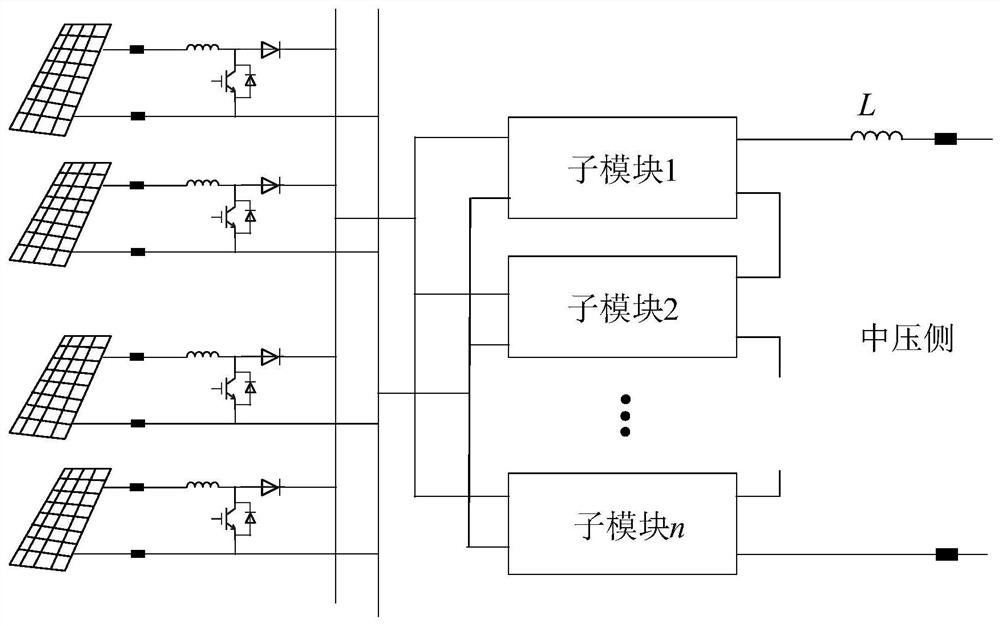Photovoltaic direct-current transformer topological structure and non-locking fault ride-through control method
A DC transformer and topology technology, applied in the direction of DC power input conversion to DC power output, photovoltaic power generation, photovoltaic modules, etc., can solve problems such as affecting power supply reliability, increasing Boost-level losses, and long start-up process of DC transformers. The effect of improving power supply reliability and reducing costs
- Summary
- Abstract
- Description
- Claims
- Application Information
AI Technical Summary
Problems solved by technology
Method used
Image
Examples
Embodiment Construction
[0046] In order to make the object, technical solution and advantages of the present invention clearer, the technical solution of the present invention will be clearly and completely described below in conjunction with the drawings in the embodiments of the present invention. The embodiments described in this application are only some embodiments of the present invention, not all embodiments. Based on the spirit of the present invention, all other embodiments obtained by persons of ordinary skill in the art without making creative efforts all belong to the protection scope of the present invention.
[0047] Such as figure 1 As shown, the topology of the photovoltaic step-up DC transformer disclosed in this application includes: a bus bar, a power conversion circuit, an output inductor and an output contactor.
[0048] Multiple groups of photovoltaic panels are respectively connected to the busbar through the outlet switch, and the busbar is connected to the input end of the p...
PUM
 Login to View More
Login to View More Abstract
Description
Claims
Application Information
 Login to View More
Login to View More - R&D
- Intellectual Property
- Life Sciences
- Materials
- Tech Scout
- Unparalleled Data Quality
- Higher Quality Content
- 60% Fewer Hallucinations
Browse by: Latest US Patents, China's latest patents, Technical Efficacy Thesaurus, Application Domain, Technology Topic, Popular Technical Reports.
© 2025 PatSnap. All rights reserved.Legal|Privacy policy|Modern Slavery Act Transparency Statement|Sitemap|About US| Contact US: help@patsnap.com



